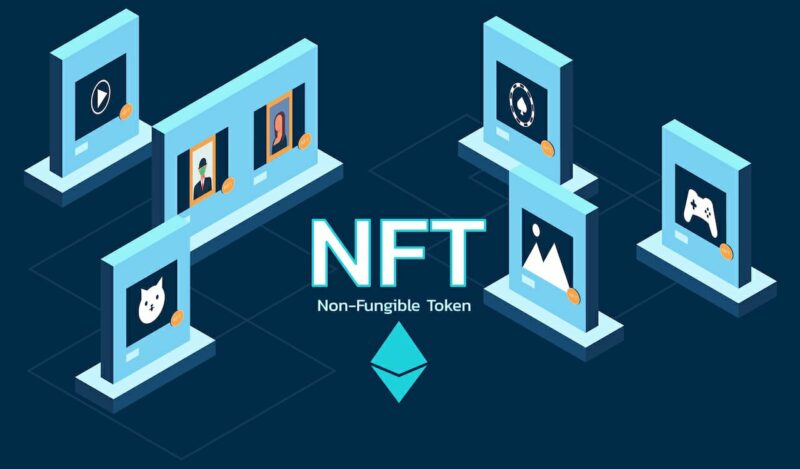How Large is the Market for NFTs?

Author: Andrew Kang
What is the size of the market for NFTs? This question is a hard one to answer, since NFTs can represent so many vastly different types of assets. Ownership of bonds and real estate can be represented as NFTs, as can art, in-game items, and music. The image below is a broad taxonomy of the different types of NFTs.
While securities NFTs potentially constitute a massive market, the infrastructure and regulations required are still in nascent stages of development. Comparatively, collectible NFTs have exploded this year into a multi-billion dollar market with trading volume recently surpassing $100m daily. Let’s focus on the latter.
Collectible NFTs fall into multiple categories. For example, Cryptopunks could be considered both art and historic relics, considering they were one of the first NFT collections on Ethereum—note Visa’s recent acquisition of a Cryptopunk citing it as a historic commerce artifact. An NFT that started out as just an art or meme might later be integrated into a game as an item or avatar—imagine playing a new version of Street Fighter with your Bored Ape.
One way to size the NFT market would be a bottom up approach – looking at the current market cap of Topshots, Cryptopunks, Artblocks, etc and projecting their growth. Nansen estimates the market cap of the top collections to be greater than $4 Billion.
But projections based only on current market growth could yield a great underestimation considering certain subsectors (Memes, Video Game Moments, etc) have yet to cross the chasm. For example, Dogecoin, which stands at $40B market cap, could be thought of as an early manifestation of a fractionalized NFT, yet primary market sales of meme NFTs have barely reached eight figures; we expect the recent advent of fractionalization protocols to accelerate this trend.
A top down approach would involve looking at markets for real world items that have similar characteristics and serve similar human desires as collectible NFTs. These characteristics boil down to a combination of things that:
1. People don’t need
2. Can be used to flex (see Arthur Hayes’s most recent post)
3. Have cultural or historical relevance.
Some real world markets that could serve as analogs and have completely digital counterparts include:
· Luxury goods (fashion, cars, watches, champagne)
· Art
· High-end real estate
· Artifacts
· Other collectibles (stamps, sports memorabilia, coins)
How large is the market for Luxury goods? Let’s look at a list of a few companies sorted by market cap:
1. $365B – Goldman Sachs
2. $153B – LVMH
3. $133B – Uber
4. $75B – Walgreens
5. $42B – Hermes
Just kidding. The numbers are right, but the order of the companies are flipped. LVMH and Hermes are #1 and #2 respectively, with Goldman Sachs, Uber, Walgreens placing #3, #4 and #5:
1. $365B – LVMH
2. $153B – Hermes
3. $133B – Goldman Sachs
4. $75B – Uber
5. $42B – Walgreens
What about the art market? $50B in sales were reported in 2020 for the global art market. But non-digital art doesn’t turnover very often – pieces that are bought are not often resold the same year – so $50B is not the same as the value of all art. If we zoom into just one artist, Pablo Picasso, the estimated “market cap” of all 50,000 of his pieces is in the tens of billions. What if we include Monets, Rembrandts, Pollocks, and Basquiats?
Some have made the argument that the NFT market is saturated. That there are too many cryptopunks, artblocks, bored apes, etc. But compared to the number of “meatspace” NFTs, this does not seem to be the case.
Considered one of the top luxury watch brands, Patek Phillipe has been around since the 1800s. They produce 60,000+ watches a year. Roughly 4,000+ Richard Milles, 8,000 Lambos, 100,000+ Hermes bags are produced annually. Every year that goes by, the less scarce these items become. The opposite can be said for popular NFT collections with hard caps, as NFTs naturally become lost through the passage of time.
Last but not least, consider the gaming skins market which is currently estimated at $40 billion per year. This market is already natively digital, and it looks like it won’t be long until game developers start ditching the walled garden model and start enabling more open marketplaces through NFTs. Imagine how much larger this market will grow with the introduction of meaningful ways to earn cash flows through in-game assets.
So how big is the NFT market really? Much larger than most of us could possibly imagine.
Thanks to Benjamin Simon, Marc Weinstein and Eva Wu for feedback on this writing.












